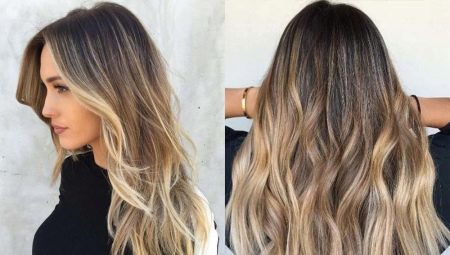To have a beautiful hairstyle, it is enough to use the fashionable technique of painting the cranks and for six months to forget about painting. The secret of this full-fledged coloring is the healthy condition of the hair, the presence of certain skills, as well as a thorough study of the process itself.
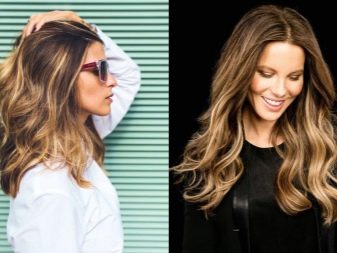
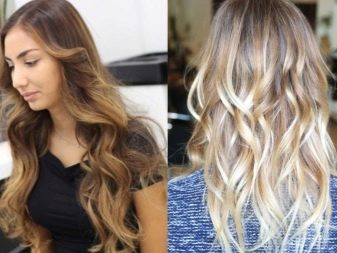


What it is?
A new fashionable coloring appeared thanks to the Italian hairdresser and stylist Aldo Coppola. The method got its name because of its resemblance to a very expensive and rare type of wool - shahtoosh. The specificity of staining really allows you to attribute it to the most elite luxury look. Experts among themselves call this method "kiss of the sun."
Indeed, the ability to change hair dyed in this way is impressive. Thanks to the features of the process, strands with sunburn effectthat in fact is kind of highlighting with shading of color cascades.


Unlike ordinary whitening strands, painting of rods is carried out in an open way, without the use of foil and other devices. The result depends entirely on the skill of the stylist or one’s own abilities in conjunction with a rich imagination. For best results, hair is dyed in small strands, be sure to step back from the root zone, leaving it virtually untouched. Borderline gradations are extinguished by fleece, which is done before applying the paint.Long hair dyed using this technique looks very beautiful and fresh.
Soft overflow of colors is carried out with gradual transitions: from dark - at the roots, to lighter - closer to the tips. Several colors are chosen at once, which are used simultaneously, combining, varying and applying in accordance with style and mood. Deepening the color with a smooth transition into radiant strands gives the hair vitality and volume. They look alive and natural, while maintaining their natural properties.
On light curls, the so-called reverse shuttle, with a gradual lightening of darker saturated strands towards the roots. In the basal zone, the hair remains intact. This method is suitable for both girls and women.
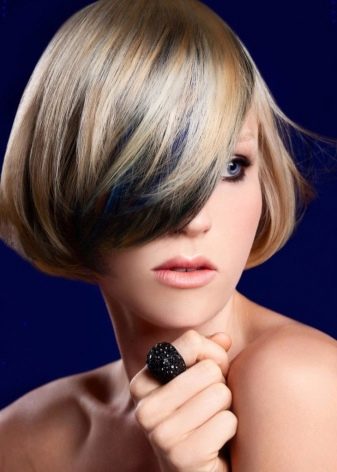
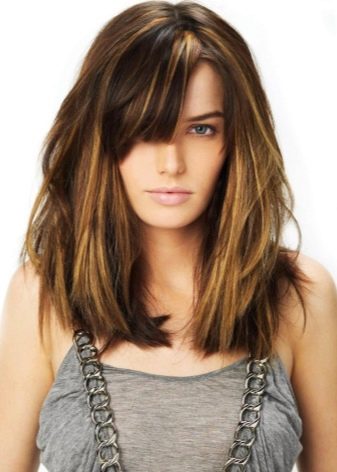
Masters advise using a shuttle for dyeing dark hair. At least this method was invented just for this. But even on light strands you can achieve an amazing effect. This method includes several coloring methods in the technique of California highlighting, ombre and balayazh at once. Only unlike them, hair looks more natural and more natural.
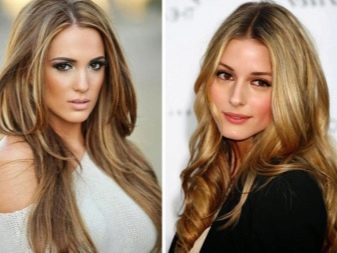



Advantages and disadvantages
When performing complex specifics of the execution of staining in the technique of shatushi exist The following positive properties:
- painting in the style of shatush quickly changes the image;
- staining is easy and fast (if you have the necessary relevant skills);
- the result lasts a long time, and re-staining will be needed only after a few months, which is very economical;
- the technique is considered the most gentle and soft, preserves hair roots and is suitable for coloring curly naughty curls;
- a hairstyle from colored hair looks good both in loose and assembled form;
- hair looks flawless, seems more voluminous, thick and shiny;
- the strands successfully hide the growing gray hair, in the color game the boundaries of their and dyed hair are lost, providing natural hair growth;
- colored curls in any lighting look winning, as if small lanterns illuminate from the inside;
- with correctly selected color accents, you can not use tongs and curling iron for styling at all;
- shatush created to emphasize the advantages and hide flaws, softly illuminating the contours of a woman's face, presenting it in the most favorable light.


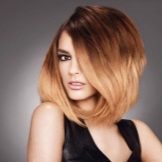
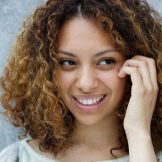
The indisputable advantages of this dyeing technique certainly benefit in comparison with the expensive procedure in beauty salons. But this is perhaps the only drawback of the technique. And also her can not be used if gray hair is one third of the total volume of hair. The procedure requires special skills. If there are none, then the staining result can be very unexpected.
To preserve color lines, feathering and color coordinates, including saturation, it is necessary to adjust the hair format about once every four months.

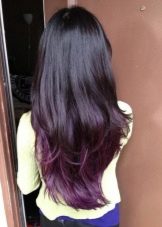
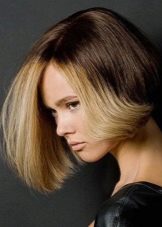

Differences from other staining techniques
The technique differs from the highlighting classic by the system of color extension: the root zone differs noticeably with the rest of the hair color, and smooth transitions give the curls a 3D effect. As a result, the hairstyle looks very elegant and noble. In general, the technique of shuttles is similar to trendy ombre and balayazh, based on the extension of color.
- Ombre consists in the complete coloring of the highlighted strands of hair, practically without transition, and with the crank, individual strands from the same ends, but differently, are colored. The gradient in this case is different. Shatush is easy to distinguish from ombre.
- Sophisticated soft coloring used in the technique hut: all hair is dyed completely, and the transition effect is provided by the peculiarity of applying paint. The more vague and inconspicuous the gradient, the more professional the master’s work.
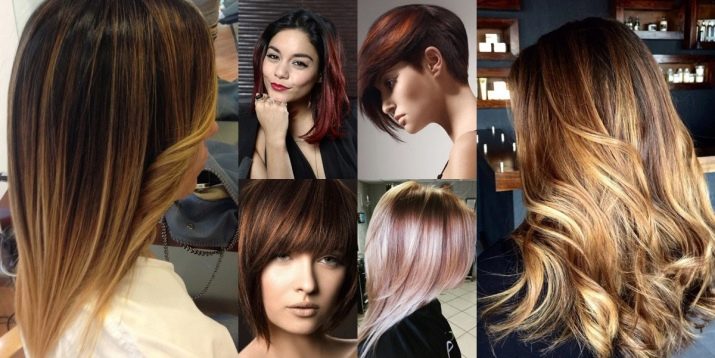
Who is it for?
As mentioned earlier, the shuttlecock technique was created mainly to highlight dark strands. Thus, they acquired a lightoscopic effect and favorably reflected light. But this does not mean that fair-haired women cannot use it for coloring strands. Just for them there are some nuances of such a procedure. For instance, the use of strong paints with persistent pigments, which in itself is harmless.
However, modern industry produces many harmless colors for brown-haired women and blondes with firming and caring ingredients. Therefore, blond women and girls can successfully "shuffle" their hairstyles.


Women with a large amount of gray hair should refrain from dyeing using the crank technique, since in this case a lot of paint will be needed, which is a completely different coloring technique. For ladies with short haircuts, this method is also not suitable. You cannot achieve a smooth transition of color on hair of limited length. Staining of this type will look in this case at least ridiculous.
Pixie, four-inch or bob hairstyles also fall into the rank of exceptions. The desired color effect will not be achieved and all the works of the master may be in vain.
When choosing a color scheme, you should give preference for natural colors: gold, pearl, walnut, wheat, cambric and their shades. White-haired beauties should choose gentle ammonia-free hair colors in warm shades with silk.
The choice of a particular shade of hair dye should be consistent with the general type of appearance, as well as taking into account the characteristics and individual nuances of each woman.
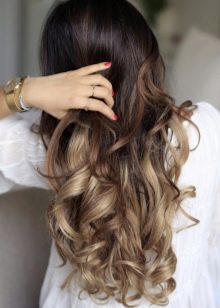
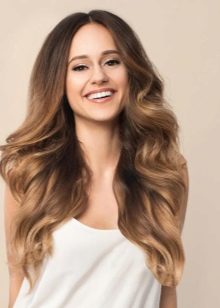

How to choose a suitable shade?
The technology of dyeing and the combination of correctly selected dye in combination give the same effect for each type of hair. Mistakes cannot be made, otherwise the effect will be the opposite. Colors should be chosen in one gamut. The exception is intentionally contrasting solutions. But in this case too, border combinations should be avoided. For example, a combination of gray and red strands.
When performing color tinting, variegated variations are allowed. But in this case, one should adhere to the golden mean.
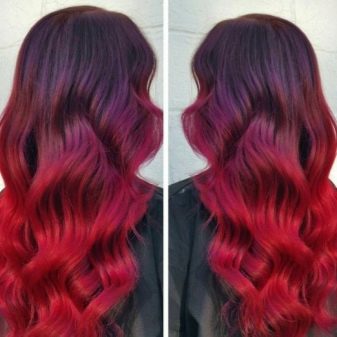
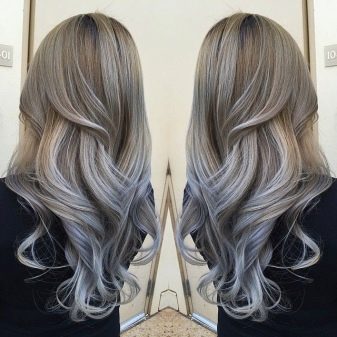
Rainbow shatush Suitable for all types of hair, any length and complexity. In this case, you do not need to lighten all the curls, but only to add additional color. In the process of coloring, bleach individual strands, which are then filled with a color pigment that is washed off over time.
After rinsing, the curls acquire a characteristic classic look of a crank, which allows you to easily do a hairstyle in more restrained colors. Masters of hairdressing advise when choosing a particular color to proceed from a female color type of appearance.
- Winter type dark hair and relatively fair skin with any eye color are characteristic. Colors of this group: cold and warm shades of brown, green and blue.
- Spring type appearance is characterized by warm skin with a peach or pink tint and blond hair with reddish tones. All colors with yellow shades are suitable for him.
- Women summer color have light pink skin and blond hair. The colors of the cold palette are suitable for them: from blue to ashen.
- Autumn type appearance involves reddish hair, brown eyes and peach skin. Here, a warm gamut of natural natural colors and shades: red, yellow and copper will be appropriate.
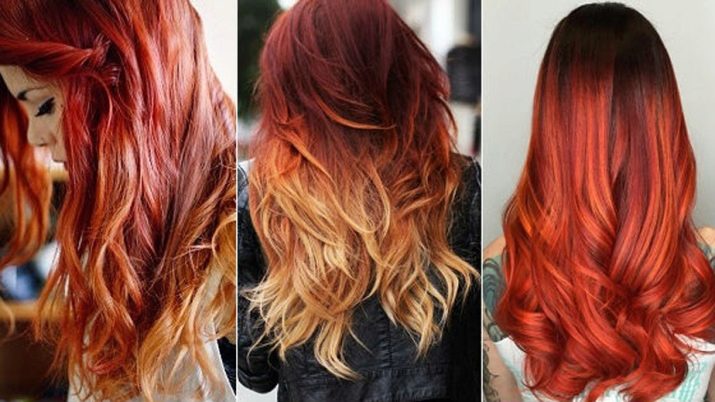
On brown hair
Calm hair wheat-brown shades, interspersed with straw, pink, ash and sand strands. Brown hair is very suitable for creating a sunburn effect. Filled with the solar wind, pearl overflow of sand and moonlight, they literally come to life, being the main decoration of their owner.


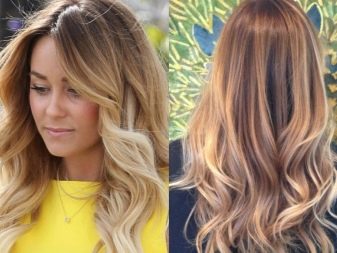

On dark hair
The main colors of dark hair for this technique are walnut, chestnut, chocolate, caramel, oak bark, bronze, all honey and coffee shades and other colors. In combination with fair skin and eyes, these colors successfully change the appearance for the better. All warm natural colors and shades are suitable for the autumn type.
The darker the hair, the brighter and richer the individual strands should be tinted. For example, on black hair use coffee and amber shades all stripes. Burgundy and eggplant tones, ruby, purple and purple strands also look good. Women of the winter type will use cool, pure colors.



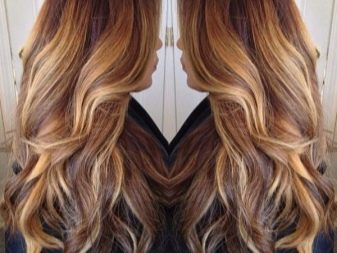
Coloring for fair hair
Owners of blond hair need to choose platinum, snow or milky shades. On fair hair, gilded or silver blotches look great, as well as a shade of linden honey and white clover. Mirror pearly halftones will give a special glow. A successful selection of colors guarantees a staining effect.
For a good result, at least shades are chosen in three colorsclose to the natural tone of the hair in several shades. A well-chosen color creates the desired volume and texture of both individual strands and the entire hairstyle as a whole.
The main rule - the result should correspond to the main idea.
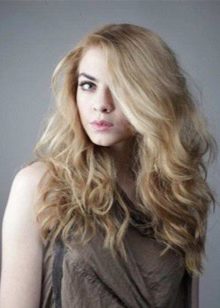

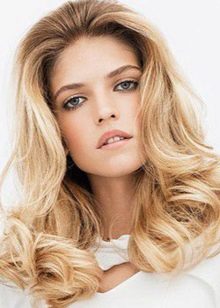
Color dyeing strands
The trendy trend did not disregard the lovers of creativity. Combinations of green, red, purple and blue strands flash not only on fashion catwalks. Stepping into everyday life, a colored shuttle became available to every woman who wants to make her image truly impressive and vibrant. And in fact, why not shine, like a bright "star", if all possibilities are open to this.

How to dye your hair?
There is no particular difficulty in dyeing hair using the crank technique. The only thing is that for some time you should refrain from any aggressive influences before and after the procedure. Chemical curling or straightening curls should be avoided, otherwise the result of dyeing on damaged hair may be completely different. To conduct a successful procedure, you need to adhere to some rules.
- Choose paint only quality manufacturers. At the same time, withstand the palette in several similar shades.
- Apply coloring compound It follows a special brush made of natural materials. The size of the brush, its width should be at least 3 centimeters.
- Container for coloring should be made of glass or special plastic. In no case should metal or food grade plastic be used for these purposes.
- Comb curls before coloring follows a special comb with wide teeth. If necessary, you can fix long curls to the shoulders with holding clips or hairpins.

Important! The technology does not require the use of a special hat or foil, since the hair under the paint should remain in direct contact with air.
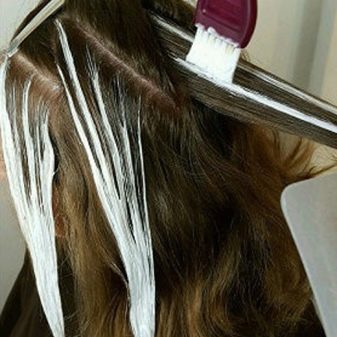
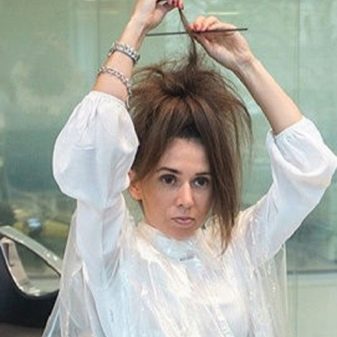
Traditionally, two staining methods are used.
- Fleece. In this case, the hair should be combed first at the roots before applying the dye. They do it like this: curls are divided into parts - no more than 2 centimeters, and the rest are fixed on the back of the head with clamps. Start from the back of the head. They take a curl, comb it at the roots and immediately apply paint, without having to impregnate the entire curl with it, but only apply paint to the surface, starting from the ends.
Hair needs to be dyed accurately, intensively and accurately to achieve smooth color transitions, with darkening at the roots. All strands are processed in the same way in layers. The paint is held in different ways, depending on the type of hair - an average of 10 to 40 minutes. Then the hair is washed well with running water without using any detergent. Color pigments are fixed with special rinsing agents.
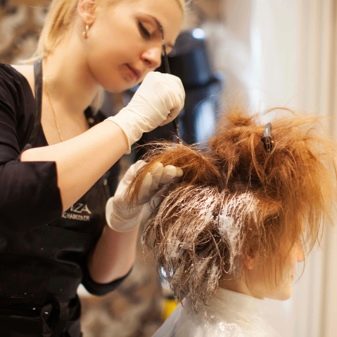

- You can dye your curls with the shatushi method without prior charge. The method is almost the same as in the first case, but it is best to paint in salons, by professional masters. They, like experienced artists, mix the right color palettes, applying them in accordance with the spectral type of hair.
In areas where pigments are fused, special technology should be applied that creates a harmonious color transition for the hair. As a result, color highlights on the hair look as natural and natural as possible. Lightened hair must be tinted after drying.
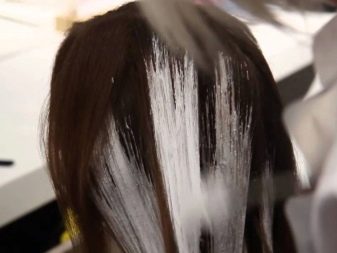
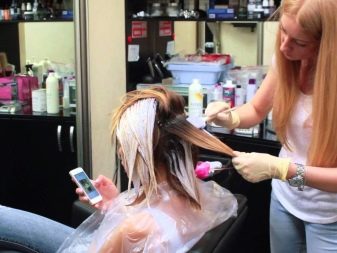
Dyed hair requires special care. The paint weakens the hair, so they need to be regularly signed with funds that restore the structure. There are some rules for leaving., which every woman with dyed hair should know, namely:
- hair should be washed using mild products containing special compounds that preserve color; modern industry produces a wide variety of shampoos and conditioners for colored hair;
- do not forget about masks made from natural ingredients: egg yolk, honey and goose fat;
- after washing your head, you need to periodically irrigate with herbal infusions and decoctions of medicinal herbs.
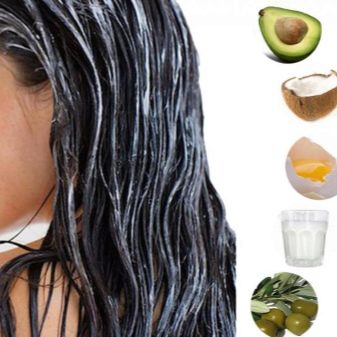
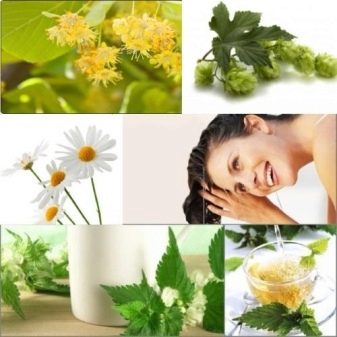
Important! Perfectly selected hair care products will help keep your hair vibrant and vibrant.
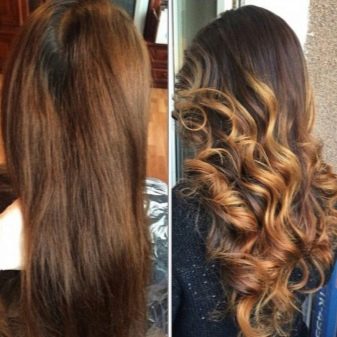

Reviews
According to the reviews of the happy owners of beautiful curls made in the technique of shatushi, you can dye your hair yourself. It is worth paying attention to the following nuances:
- First you need to prepare curls in advance for the upcoming changes, for which a course of strengthening healing wraps is needed; moreover, ladies with healthy hair should not deny themselves the pleasure of delighting precious locks with nutritious and moisturizing elixirs;
- just before staining, you do not need to wash your hair for at least 3 days, so as not to wash off the protective film;
- you can also comb and color the occipital and parietal areas of the head; for the effect of strong staining or lightening, do not comb the curls too much;
- when using lightening compounds, strands after the procedure must be treated with a tinting balm; paint should be distributed in intensity, paying attention to staining the ends of the curls;
- when applying paint, do not deviate too much from the roots, otherwise the procedure will soon have to be repeated;
- in the presence of highlighting before painting, it is necessary to level the overall tone of the hair by dyeing in a basic shade;
- the shuttle is designed for curly hair, so owners of straight curls should, for greater effect, wind the strands in any way possible;
- for the best effect, you should choose cascading haircuts for long and half-long curls; the shatush in this case looks in the most favorable light.

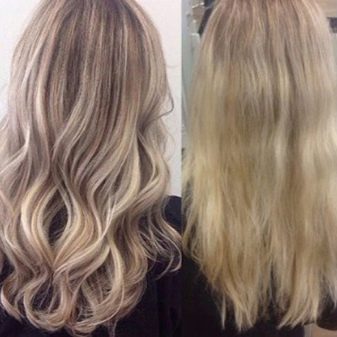
This is perhaps the main thing you should know when using this trendy dyeing method. You can try to achieve the most natural and effective image on your own, but it is better to trust a professional. There are no special secrets, it is enough to have some general skills in dyeing hair and to thoroughly study the technology of the shatushi itself.
See the video below for a master class on stencil dyeing.
